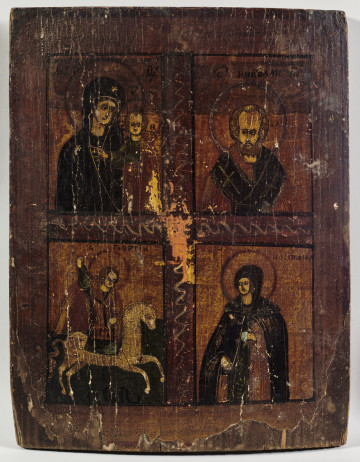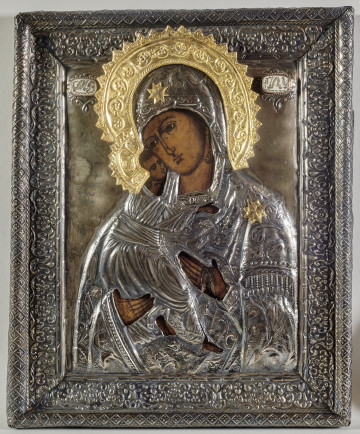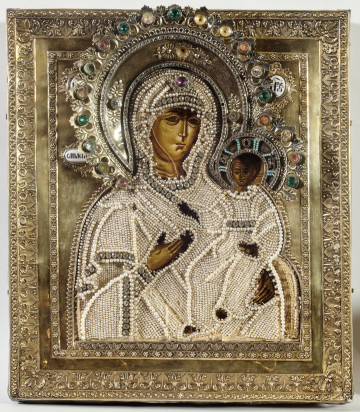
A multi-field icon, the Mother of God Odigitria of Kazan; St. Nicholas, St. George the Martyr, St. Anastasia.
XIX/XX wiek
Castle Museum in Łańcut
Part of the collection: Artistic glass
A small vial with a cap made of hyalith. The main ornamentation was created with the technique of gilding. To make it more appealing to the eye, some gilded surfaces were polished, while others were left matte, which results in additional lines in gilded spots that bring out their unique beauty. Depictions on the surface of the vessel are expressly inspired by the art of the Far East, including such motifs as a couple of herons and palm trees as well as smaller plants and insects. Decorative items made of hyalith (or black glass) were very often embellished with Far Eastern motifs, making them resemble vessels made of lacquer.
Hyalith was invented at the beginning of the 19th century by Georg Franz August Longueval, count of Buquoy (1781–1851). He was a mathematician, a physicist, a chemist, a philosopher as well as an owner of several glass factories. His broad interests and experiments led him to discover a new recipe for molten glass that has the characteristically deep black colour. Its production started in 1817. Owing to the unique hue, products made of hyalith, such as cups, vials, vases, tea containers or candle-holders, quickly became fashionable and widely in-demand.
The cap of the vial is not original. It was made of brass and painted black with an imitation of abraded gilding in order to make it match the vial in terms of style. The decoration on the surface also shows traces of old retouching of the gilding with a brown paint.
Author / creator
Dimensions
entire object: height: 11,8 cm, width: 6,2 cm
Material
brass
Owner
Museum of King Jan III's Palace at Wilanów
Identification number
Location / status

XIX/XX wiek
Castle Museum in Łańcut

początek XX w.
Castle Museum in Łańcut

18th century
Castle Museum in Łańcut
DISCOVER this TOPIC
National Museum in Szczecin
DISCOVER this PATH
Educational path